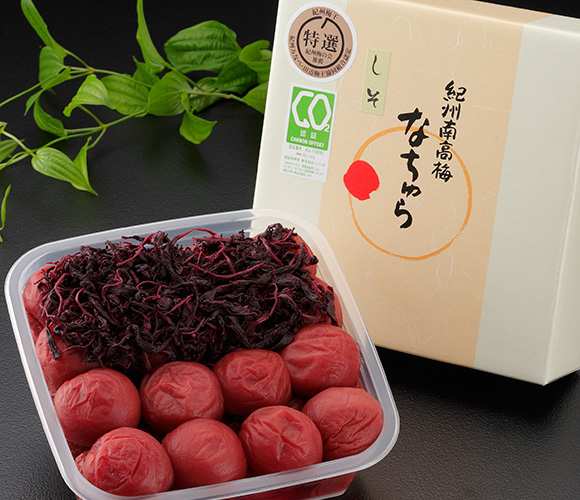Knowledge about Ume

The Making of Ume
-
-

Minabe, the Hometown of Nanko-Ume
- There are many places of production of Ume (Japanese apricot), but “Kishu Minabe” is the hometown of the top Ume brand, “Nanko-Ume”. In the middle of February every year, white Ume flowers spread out throughout the mountains as far the eye can see. The dignity and elegance of the Ume flowers is described as “A million Ume trees at a glance, and a fragrance that covers many miles”, and is famous for its beauty which can be enjoyed by all our senses. When the thousands of flowers finish blooming, the trees start producing big, fragrant fruits on their branches. These fruits are then transformed into Umeboshi, which can be a healthy enhancement for your meals. Nanko-Ume produced in Minabe is famous for having the best quality in Japan. The puffy, soft flesh, thin skin and fruity flavor can’t be found in other Umeboshi.
-
-
-
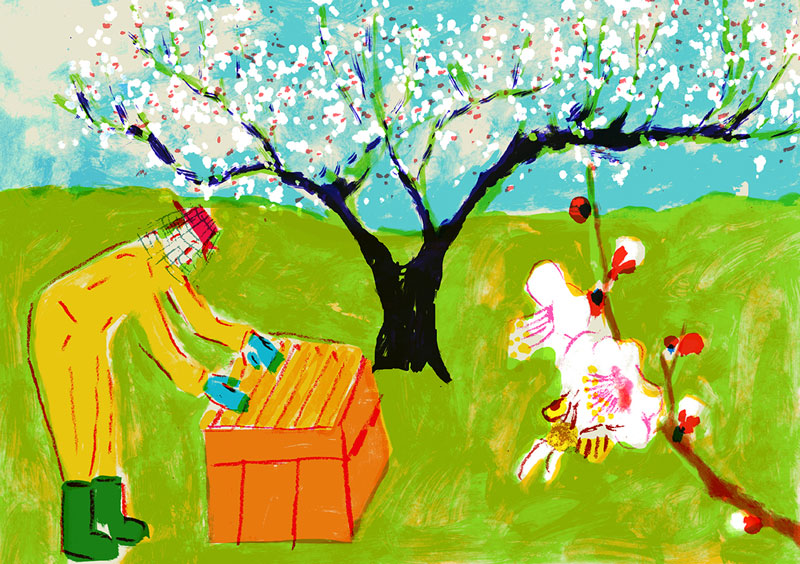
Honey Bees Have an Important Role in Creating Delicious Ume During the Ume Flowers’ Pollination Period
- The flowers of the Nanko-Ume start blooming in mid-January, when the air of spring can be felt. The powers of nature and the honey bees help pollination to occur. The size of the yield can vary greatly depending on how hard the honey bees work. Therefore, it is even said that the Ume farmers are more sensitive to temperature change than the honey bees during this period. When pollination is complete, the Nanko-Ume trees produce their fruits in the gentle climate of spring, which grow rapidly in the next three months. Although the temperature does not vary much in Kishu Minabe, there can sometimes be frost, long rain, and unexpected typhoons, which cause various problems. Although the farmers face various trials, they lovingly watch over the Ume until they fully ripen at the end of June, so that they grow into big, beautiful, plump fruits.
-
-
-

Fruity Umeboshi is Created From Fully Ripe Ume
- It is suggested that one of the reasons why Umeboshi made from Nanko-Ume tastes so fruity and delicious, is that the fruits are harvested when the Ume fully ripens into shades of yellow and red. By harvesting these fully ripe fruits in June, the best time for harvest, its characteristic softness and plump flesh can be enjoyed when it is made into Umeboshi. This method of waiting until the fruit is fully ripe is different from standard methods, but is a key step in producing the especially thin skin and the texture that seems to melt in your mouth. Of course, careful management of the Ume from spring to early summer also determines the quality of the Ume, and makes the production of huge 5L-sized Ume fruit possible, showing a clear difference with other Umeboshi.
-
-
-
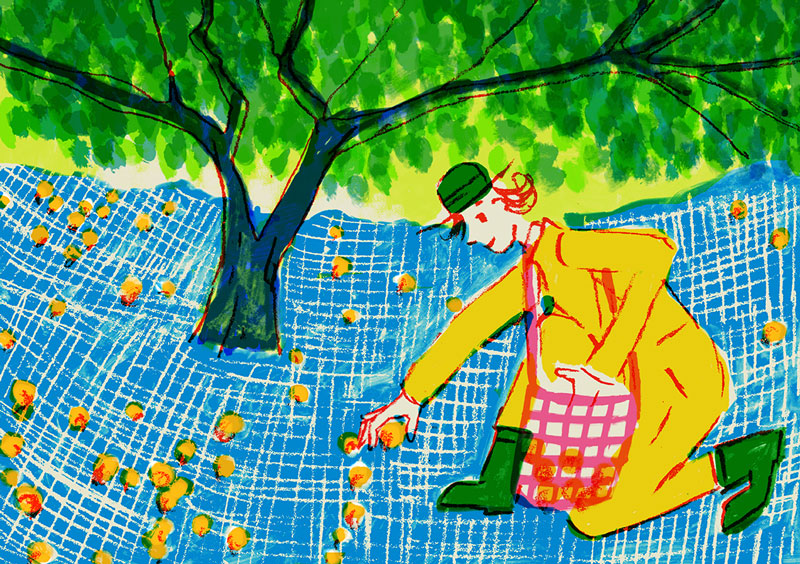
It’s Time For Harvest! A Battle With Time.
- Now it’s June, the time to harvest the fully ripe Ume fruits. During this time, the whole farmer family will start harvesting the Ume from early morning for the duration of the month. Since Minabe is the habitat of “a million Ume trees at a glance”, the families may ask others to help out in their battle with time. In Kishu, a net is spread out to catch the ripe Ume when they fall, which are then collected one by one by hand. The fallen fruits must be handled carefully to avoid scratches. They must also take measures to maintain the fruits’ freshness. The physical work is carried out wherever there is Ume, including the mountain slopes and plains, so it can be very hard on the legs and back. However, the Umeboshi’s superb quality can only be maintained by the farmer’s care and effort, because they handle the fruits as if they are the farmers’ own children. We would love for you to experience the deep, fruity fragrance of Ume harvested during this season.
-
-
-
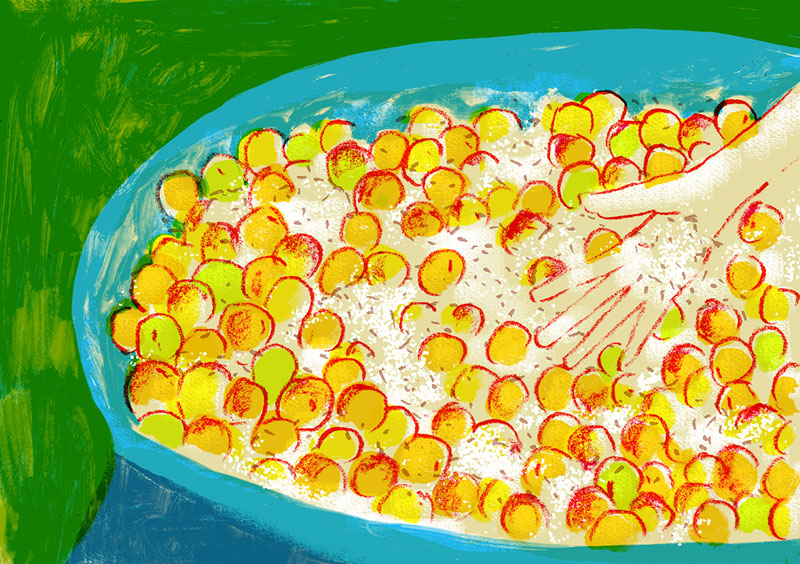
Preserved in Salt on the Day of Harvest. Its Freshness is Key.
- The Ume belongs to the same fruit group as the ansu apricot and the Japanese plum. Ripe Umeboshi has a full bodied, sweet and sour, and somewhat elegant fragrance. The steps of transforming the Ume into Umeboshi begins in the workplace, filled with the delicious smell of Ume, on the day of harvest. The harvested Ume is preserved in salt within the day, and ferments for over two months. As the rainy season brings high humidity and high temperatures, the amount of salt and the fermentation progress of the Ume needs to be constantly checked to prevent it from rotting or going moldy during the fermentation period. Umeboshi with the perfect saltiness is the culmination of the staff’s efforts and the battle to start the fermentation process while the fruits are fresh. It is said that the Japanese phrase, “ii ambai” (literally, good salt Ume), which means “a good balance” originates from Umeboshi.
-
-
-
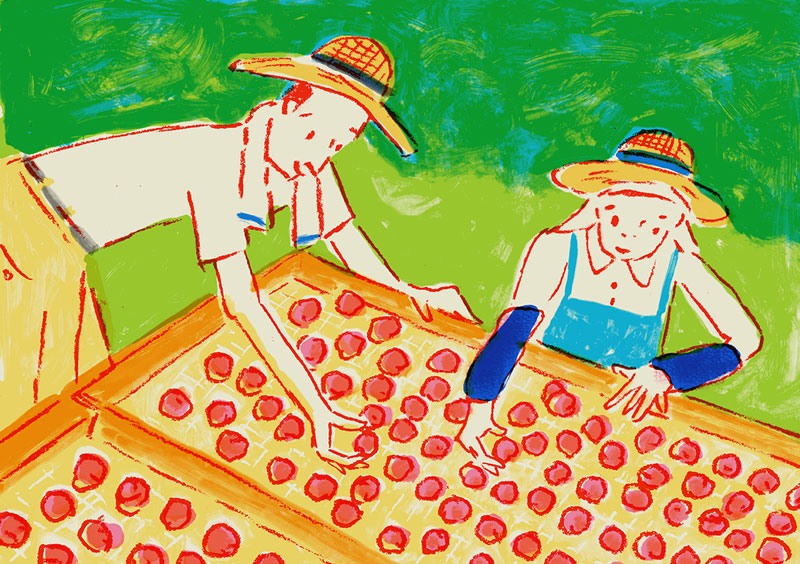
It Transforms into Sour Umeboshi By Drying in Natural Sunlight.
- At the end of July, the hottest time of the year, the climate is good, and is the best time for drying Ume. After the fermentation period, the Ume are placed on a net one by one, and hung up by hand. By patiently drying both sides of the Ume, the shape of the Ume is kept intact, and the skin doesn’t break and the flesh stays soft. The sun drying processes changes the skin of the Ume into a dark color, unique to the Nanko-Ume. At this stage, the hint of sourness can be detected in the Ume’s fragrance, and the Umeboshi is complete. It is said that carefully produced Umeboshi can even be consumed a hundred years later. It is usual for Ume to be dried during the summer, but sometimes they are dried sometime between autumn and winter, or during the spring. This shows that if salt fermentation is carried out very carefully, Umeboshi can be produced anytime of the year.
-
-
-

Categorization is Also an Important Step.
- The Umeboshi has been dried under the sun in a gentle climate, but the process doesn’t end here. The Ume is categorized one by one by the worker’s hands. They are separated into different grades according to their quality, by strict examination. The Umeboshi is also separated according to size. The premium product, the Kishu Nanko-Ume are the biggest, plumpest fruits with soft skin. Although they are separated according to grade, Ume that have some minor scratches can still be classed as Nanko-Ume. The Nanko-Ume is a top-quality product, and garners attention and popularity for its soft flesh.
-
-
-
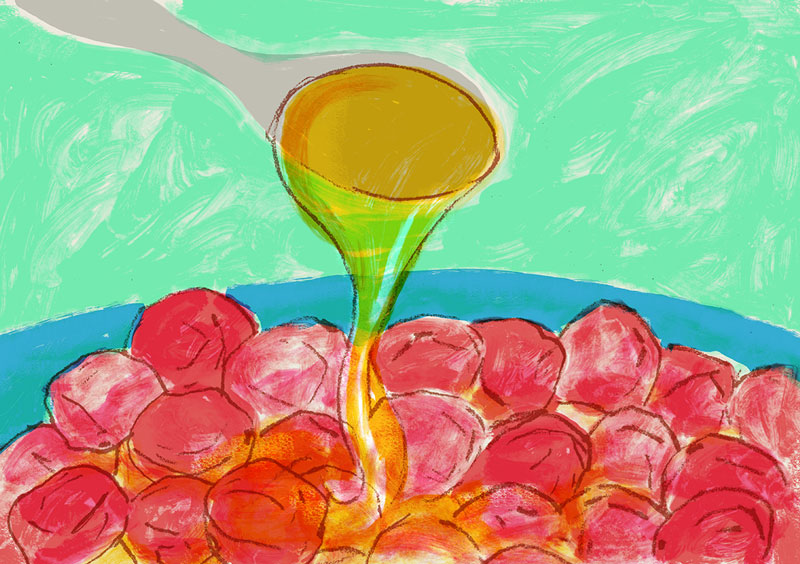
“A flavor that makes you relax.” What is the secret of Nanko-Ume?
- The sun dried Umeboshi is delicious eaten as it is, but some people don’t like the saltiness of traditional Umeboshi. Perhaps in the age of low-salt food products, the time for low-salt Umeboshi has come. Before our Nanko-Ume hit the shelves, we soak our Nanko-Ume in various seasonings to meet our customer’s preference and need. In order to lower the salt content, we first remove some of the salt, and then soak the Ume in seasoning such as honey or shiso. We leave it for more than a week, as a few days is not enough. The completed Umeboshi can play an important role in your lifestyle, as a great accompaniment to rice, a snack to go with your tea, and for beating fatigue. This is how the sweetness and deliciousness unique to the Nanko-Ume, which has a relaxing effect the moment it is placed in your mouth, is produced. The sweetness and umami soften the Ume’s sourness, and adds juiciness to the Ume.
-
-
-
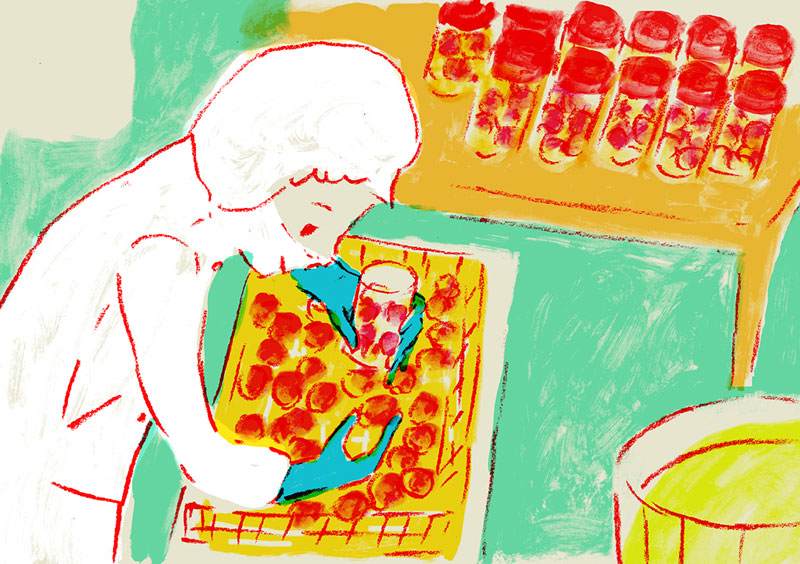
The Nanko-Ume is Packed as If They are Jewels.
- The deliciousness of Nanko-Ume is accumulated through each careful step of the manufacturing process. Before they arrive in your hands, they must first be packed. Each of these top-quality Ume is carefully and stringently inspected in a hygienic environment. After they pass our strict standard, they are then packed into bags and containers with so much care that it looks like they are being treated like jewels. Apparently, some staff feel as though they are giving their precious daughters away for marriage. As the Nanko-Ume can be easily scratched, they are still vulnerable even after being processed. The packing process is continued very cautiously. All of the staff work hard to deliver the Umeboshi to our customers, while maintaining the high standards of Minabe’s Ume every year. After the Umeboshi is sent off, another year begins, where Umeboshi production starts all over again.
-
-
-

Please Enjoy Delicious Umeboshi.
- The carefully produced Umeboshi has finally made it to the dining table! The combination of warm rice and the ruby-like Umeboshi is so irresistible you won’t be able to stop. It’s most delicious when eaten with rice, but it has a subtle sweetness so it can be simply eaten by itself. It goes perfectly with rice balls, tea and miso soup, too! Just add rolled egg, grilled fish, and seaweed for a perfect Japanese breakfast! The reason for the Umeboshi’s sourness is citric acid, an important source for an energetic lifestyle. Citric acid improves the skin and metabolism. Apparently, a certain famous actress is also in love with Umeboshi. Also, the sourness of citric acid helps us to feel more awake in the morning, so it makes sense that many Japanese people have the habit of eating a piece of Umeboshi every morning. Harness the power of Umeboshi for a productive day!
-
-
-

Bring Umeboshi, the Symbol of Livelihood, into Your Everyday Life!
- Umeboshi is perfect as a side dish to your breakfast and dinner, but it can also be used to add color and flavor to rice balls and lunchboxes. Recently, Umeshu, and shochu diluted with Ume have become popular among women. They say the gentle sourness of Ume enhances the drink. Furthermore, our Ice Ume, eaten frozen, has been a popular topic for the media, and our “dried Ume” for dessert is also one of our customers’ favorites. Our Umeboshi can be eaten as it is, or be smashed and mixed into a paste with anchovies and olive oil and eaten as canapés. These innovations are only possible with Nanko-Ume, which can be served using such a wide variety of methods. We have produced each Umeboshi with care, so that we can contribute to our customers’ happiness. Please let our Nanko-Ume be part of your smile every day!
-



